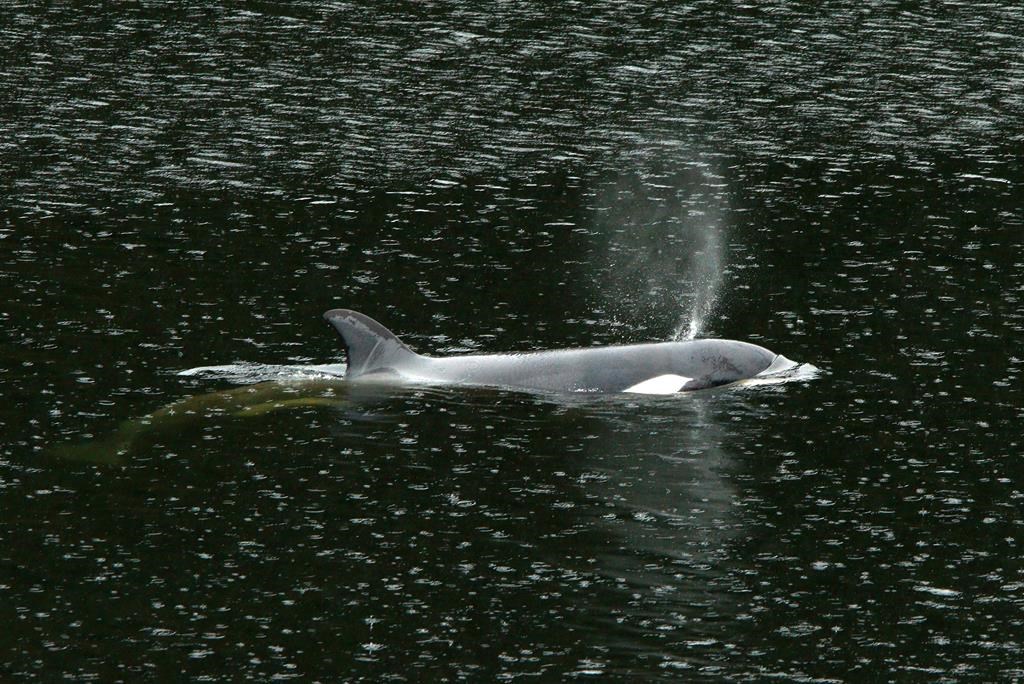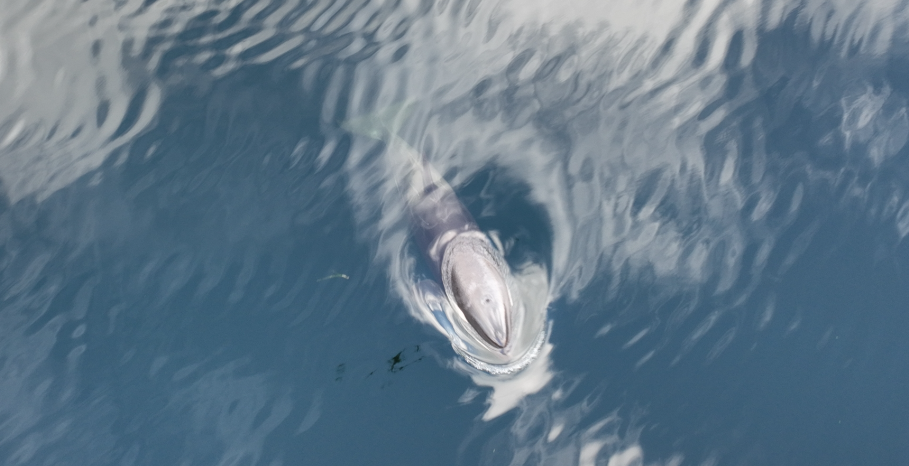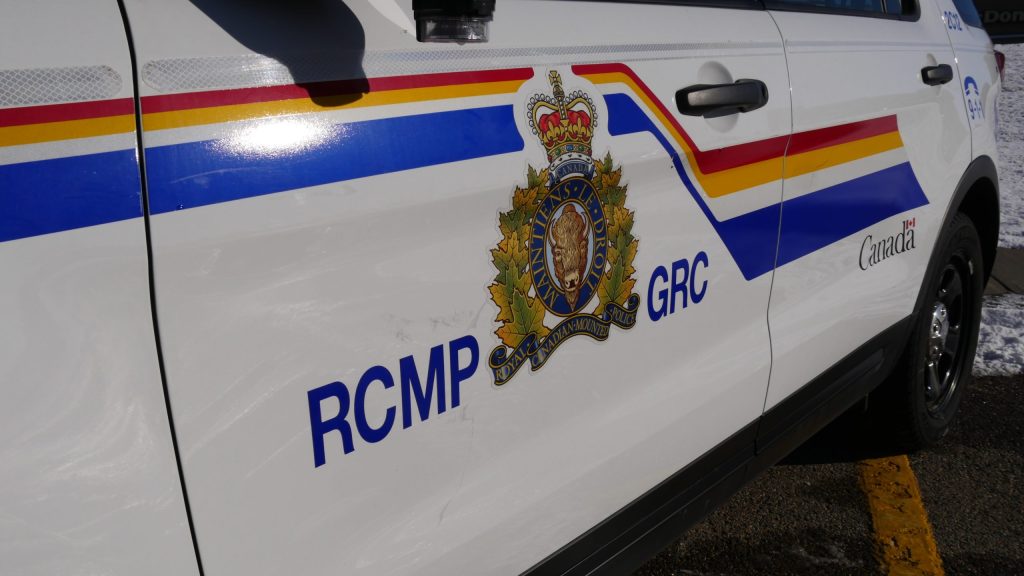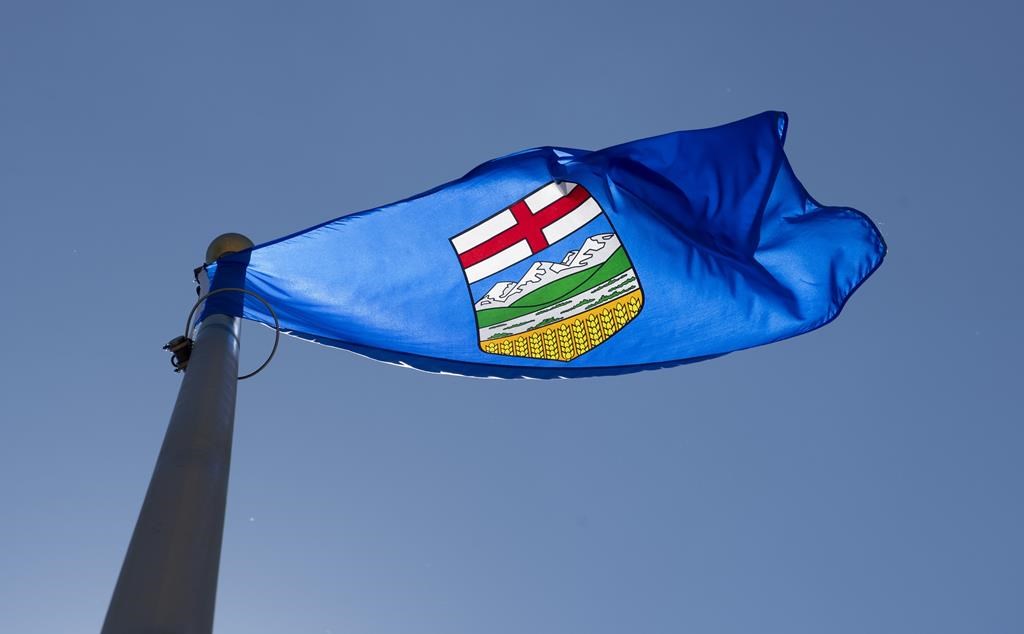‘She is not ready’: Rescue of orca calf kʷiisaḥiʔis from B.C. lagoon paused

Posted Apr 12, 2024 10:21 am.
Last Updated Apr 13, 2024 7:14 am.
Efforts to rescue an orca calf stuck in a remote tidal lagoon near Zeballos on Vancouver Island have been put on hold, after crews determined kʷiisaḥiʔis just wasn’t ready to be moved.
In an update just before 3 p.m. Friday, the Ehattesaht First Nation chief and council, as well as rescuers, shared that teams had “made the decision to stand today’s operation down” as of 12:45 p.m.
“kʷiisaḥiʔis simply decided that she is not ready to be moved. Anytime people undertake an effort like this you have to be prepared that the animal may not want to cooperate,” a statement from the Ehattesaht First Nation reads.
“There were a number of methods employed this morning to coax her into the shallow end of the lagoon and at each coordinated [maneuver] she evaded and returned to the area she has been hanging out in,” the statement explained, adding crews will regroup and work on “planning the next steps.”
“It is during efforts like this that many of us are truly humbled at the intelligence, adaptability and resilience of the orca. No matter how much we study these amazing creatures the more we realize how little we know. We are always amazed us with how quickly they learn,” the Nation said.
“During the morning experts and the veterinarian staff from the Vancouver Aquarium were able to get a good look at kʷiisaḥiʔis. She appears to still be in good health, her breathing is solid and she is swimming well. The Nation’s cultural leaders will spend the afternoon singing to the whales from the canoe.”
Road access to the lagoon has been blocked by members of the Ehattesaht First Nation, as the first official attempt to get the female orca calf out of the lagoon and transferred into the open ocean bagan.
Officials said the attempt was launched because of favourable weather conditions.
The two-year-old calf has been alone in Little Espinosa Inlet for about three weeks after its pregnant mother was beached at low tide and died on March 23. The pair got into the lagoon by swimming through a narrow and fast-moving channel connecting it to the ocean.
Efforts to persuade the calf to swim back through the shallow channel proved futile.
Earlier this week, federal officials said a team of about two dozen people had assembled to prepare the planned landing area for the complex rescue.
“The operation to move kʷiisaḥiʔis to open water and her family is underway this morning,” the Ehattesaht statement said referring to the whale by a name bestowed on her by the nation that means Brave Little Hunter.
Chief Simon John and staff and members of the First Nation were “playing key roles on the water today,” the statement said.
“The team assembled at 5 a.m. and were set off with good hearts and intention for the day’s work,” it added.
Equipment had been arriving daily in the community of about 200 people, located more than 450 kilometres northwest of Victoria.
The rescue involves veterinarians, First Nations members and whale response and logistics experts.
The effort involved corralling the female calf into a shallow part of the three-kilometre lagoon, using boats, divers and a net more than 270 metres long to prevent the whale from moving back into deeper water.
She was then to be placed into a large fabric sling and hoisted onto a transport vehicle.
A large truck with a flat bed and a wooden structure that appears to be designed to carry the whale to open water was seen in the area on Thursday.

The department previously discussed initially holding the young orca in an ocean net pen until freeing her when members of the mother’s family were nearby, but now it says she will be released directly into open water where it’s thought she is most likely to encounter her family pod.
Although the Fisheries Department had said on Thursday that it was planning “dry runs” before the rescue, Friday dawned cool and clear after days of heavy rain.
Security was tight Friday with First Nation members supervising a barrier across the road to the lagoon.
The Ehattesaht First Nation — which John has said considers the rescue a pivotal moment in its modern history — has been listening to the calf’s cries through a hydrophone.
A statement by the nation earlier this week said her calls “make you almost weep, they seem so filled with longing.”
You can watch CityNews 24/7 live or listen live to CityNews 1130 to keep up to date with this developing story. You can also subscribe to breaking news alerts sent directly to your inbox.










